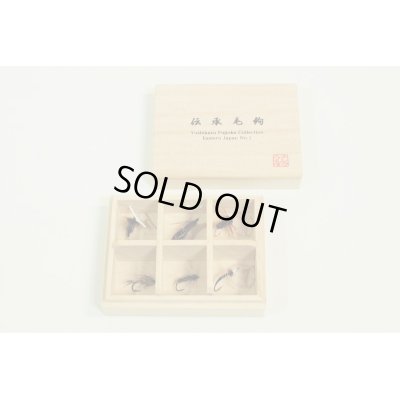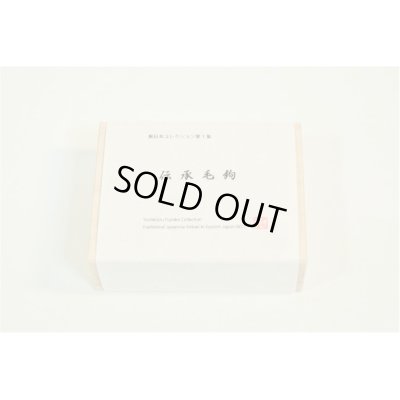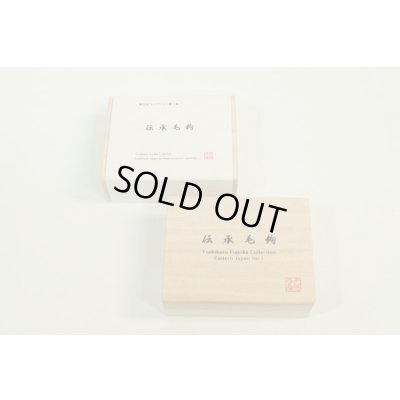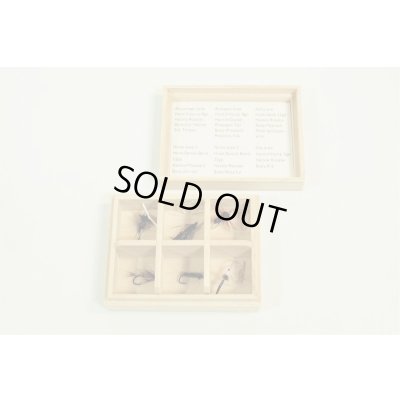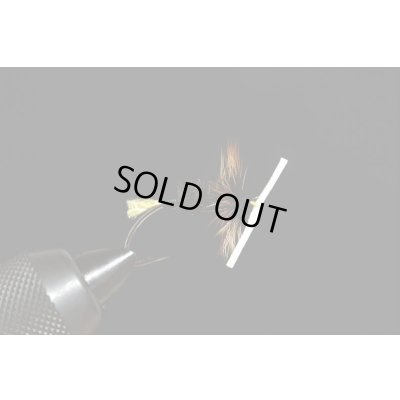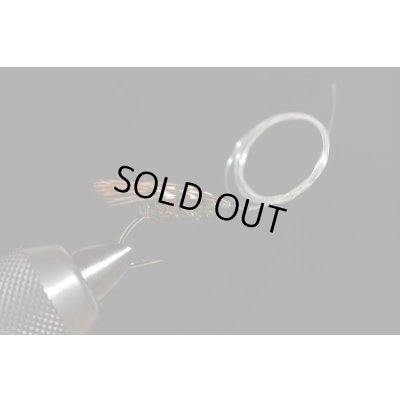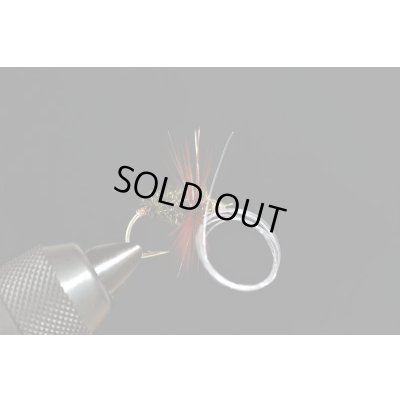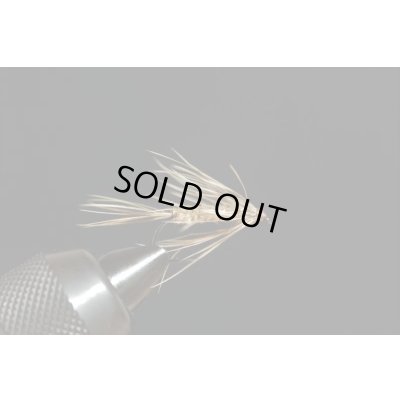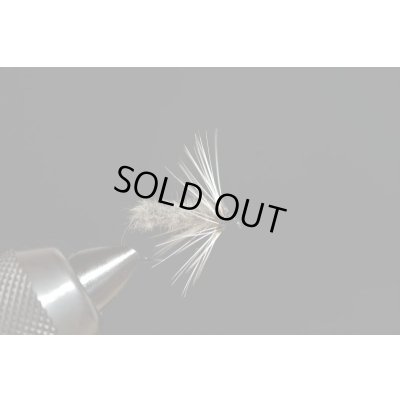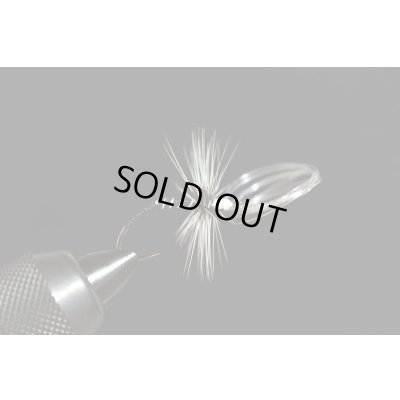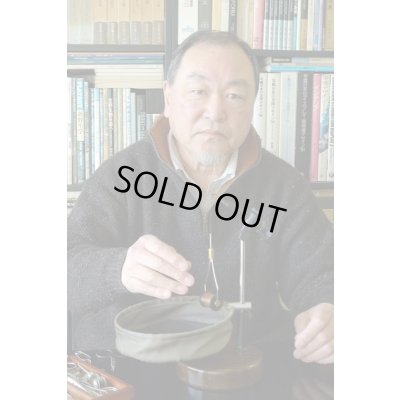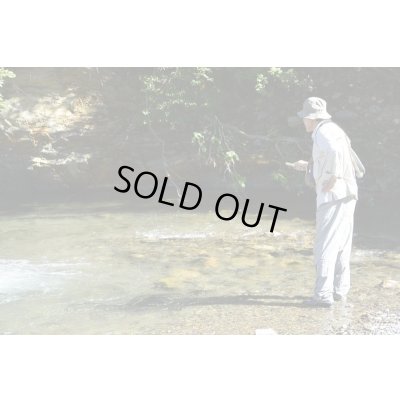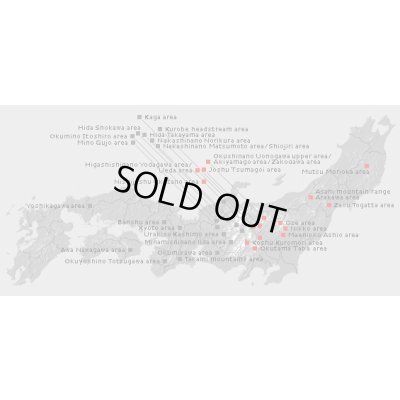Fujioka Collection Traditional Densho Kebari Set Eastern Japan 1 [FY016]
Fujioka Collection Traditional Densho Kebari Set Eastern Japan 1
[FY016]
Price: US$58.00
Weight: 240g
Not available
Mr. Yoshikazu Fujioka was born in 1948 in Kyoto, Japan. He graduated from Aichi University of the Arts and Music in 1970.
During his professional carrier, he was an acclaimed industrial space designer / producer and received many awards for his work.
Mr. Fujioka started fishing in the mountain streams of Japan in 1975, and also began his famous art work (painting and drawing of mountain streams, trout and other wildlife) around the same time. His artwork are on display at number of museums and other public facilities.
Also in 1975, he discovered some regional traditional kebari (flies) used for tenkara fishing in Sho-kawa (Sho River) region in a small shop. He has devoted his passion for collecting and studying traditional Japanese tenkara kebari since.
In 1997, he opened his website My Best Streams.
We are very much honored to present his traditional Densho kebari collection series. These kebari come in a traditional Japanese "Kiri bako" (foxglove) box. This is a masterpiece collection of Japanese mountain fishing culture, as well as a display of Mr. Fujioka’s long devotion to discovering and preserving authentic Japanese kebari patterns.
Fujioka Collection Traditional Densho Kebari Set Eastern Japan 1
Akiyamago area kebari
Akiyamago village is located on the border of Nagano and Niigata prefecture. These are very simple traditional kebari used by local anglers. This simple kebari is made of two silk threads of yellow and black and rooster saddle hackle. Eye is made by two yellow silk threads that was twisted, and to keep the eye hole a paper string inserted. This kebari is one of Mr. Shigeo Yamada’s, He was an expert tenkara fisher and the last commercial fisherman(Shokuryoshi) of Akiyamago.
Hook : Kitsune No.8
Hackle : Rooster saddle
Body : Cut hackle, Silk thread
Arakawa area(Asahi mountain range) kebari
Asahi mountain range is a mountainous region in the prefectural boundary of Yamagata Pref. and Niigata Pref. Arakawa River has the source in Mt. Oasahidake(1,870m) of the main peak. Until middle1960's, Mr. Kenji Sato in Higura and Mr. Unkichi Saito in Tokuami caught fish there as commercial fishers(Shokuryoshi). Mr. Sato's fishing method was handed down from his grandfather's day.
Hook : Kitsune No.8
Hackle : Pheasant Tail, Rooster copper
Body : Rooster copper, Pheasant tail
Ashio area kebari
Ashio is the area in the most upper part of the Watarase River. It is in the prefectural boundary of Tochigi prefecture and Gunma prefecture, surrounded by 1,000m to 2,000m class mountains. Because plowing a field was the main agriculture in this mountainous area of steep slope, neither the cow nor the horse was needed for people’s life. So tenkara fishing that did not use basu(furled taper line made of horse tail.) was devised by Mr. Kashiichi Yagisawa of Ashio Kakemizu. Copper wire is used from backing to finish to put weight to the krbari because furled tapered line was not used around this area.
Hook : Sode No.11
Hackle : Rooster neck
Body : Peacock herl
Nikko area kebari 1(Gorocho Kebari)
This typical Nikko Kebari is called Gorocho kebari. They say many Gorocho (Stenopsyche japonica) lived in Yugawa river of Nikko. Someone of diplomats or Tokyo Angling club's members ,who had enjoyed trout fishing in Yugawa river and Marunuma lake in the beginning of Showa era or the late Meiji era, ordered this pattern of flies to Hardy UK. Those flies were registered to Hardy and records remain even now.
Hook : Sprout Bend No.11
Hackle : Japanese hen pheasant breast feather
Body : Zenmai (cotton of flowering fern)
Nikko area kebari 2 (Gingoma)
Besides Gorocho kebaris, there were Nikko kebari that were tied by Japanese bantam hackle (There is also document written to be Gamecock hackle.) and water shrew fur. They are called "Kingoma" and "Gingoma".
Hook : Sprout bend No.11
Hackle : Rooster
Body : Mole fur
Oze area kebari
Kebari of Mr. Kosaku Hirano’s. Oze is the huge plateau wetland across three prefectures of Fukushima, Niigata, and Gunma. This wetland is the headstream area of Tadami river. To serve it to the guest at the mountain lodge "Hiuchi-goya" of Ozegahara that his father-in-law had built, Mr. Kosaku Hirano were doing the iwana fishing. Oze was specified the special natural treasure latet on. They refrained from fishing after all though they were permitted to fish there.
Hook : Kitsune No.7
Hackle : Rooster
Body : Silk thread
During his professional carrier, he was an acclaimed industrial space designer / producer and received many awards for his work.
Mr. Fujioka started fishing in the mountain streams of Japan in 1975, and also began his famous art work (painting and drawing of mountain streams, trout and other wildlife) around the same time. His artwork are on display at number of museums and other public facilities.
Also in 1975, he discovered some regional traditional kebari (flies) used for tenkara fishing in Sho-kawa (Sho River) region in a small shop. He has devoted his passion for collecting and studying traditional Japanese tenkara kebari since.
In 1997, he opened his website My Best Streams.
We are very much honored to present his traditional Densho kebari collection series. These kebari come in a traditional Japanese "Kiri bako" (foxglove) box. This is a masterpiece collection of Japanese mountain fishing culture, as well as a display of Mr. Fujioka’s long devotion to discovering and preserving authentic Japanese kebari patterns.
Fujioka Collection Traditional Densho Kebari Set Eastern Japan 1
Akiyamago area kebari
Akiyamago village is located on the border of Nagano and Niigata prefecture. These are very simple traditional kebari used by local anglers. This simple kebari is made of two silk threads of yellow and black and rooster saddle hackle. Eye is made by two yellow silk threads that was twisted, and to keep the eye hole a paper string inserted. This kebari is one of Mr. Shigeo Yamada’s, He was an expert tenkara fisher and the last commercial fisherman(Shokuryoshi) of Akiyamago.
Hook : Kitsune No.8
Hackle : Rooster saddle
Body : Cut hackle, Silk thread
Arakawa area(Asahi mountain range) kebari
Asahi mountain range is a mountainous region in the prefectural boundary of Yamagata Pref. and Niigata Pref. Arakawa River has the source in Mt. Oasahidake(1,870m) of the main peak. Until middle1960's, Mr. Kenji Sato in Higura and Mr. Unkichi Saito in Tokuami caught fish there as commercial fishers(Shokuryoshi). Mr. Sato's fishing method was handed down from his grandfather's day.
Hook : Kitsune No.8
Hackle : Pheasant Tail, Rooster copper
Body : Rooster copper, Pheasant tail
Ashio area kebari
Ashio is the area in the most upper part of the Watarase River. It is in the prefectural boundary of Tochigi prefecture and Gunma prefecture, surrounded by 1,000m to 2,000m class mountains. Because plowing a field was the main agriculture in this mountainous area of steep slope, neither the cow nor the horse was needed for people’s life. So tenkara fishing that did not use basu(furled taper line made of horse tail.) was devised by Mr. Kashiichi Yagisawa of Ashio Kakemizu. Copper wire is used from backing to finish to put weight to the krbari because furled tapered line was not used around this area.
Hook : Sode No.11
Hackle : Rooster neck
Body : Peacock herl
Nikko area kebari 1(Gorocho Kebari)
This typical Nikko Kebari is called Gorocho kebari. They say many Gorocho (Stenopsyche japonica) lived in Yugawa river of Nikko. Someone of diplomats or Tokyo Angling club's members ,who had enjoyed trout fishing in Yugawa river and Marunuma lake in the beginning of Showa era or the late Meiji era, ordered this pattern of flies to Hardy UK. Those flies were registered to Hardy and records remain even now.
Hook : Sprout Bend No.11
Hackle : Japanese hen pheasant breast feather
Body : Zenmai (cotton of flowering fern)
Nikko area kebari 2 (Gingoma)
Besides Gorocho kebaris, there were Nikko kebari that were tied by Japanese bantam hackle (There is also document written to be Gamecock hackle.) and water shrew fur. They are called "Kingoma" and "Gingoma".
Hook : Sprout bend No.11
Hackle : Rooster
Body : Mole fur
Oze area kebari
Kebari of Mr. Kosaku Hirano’s. Oze is the huge plateau wetland across three prefectures of Fukushima, Niigata, and Gunma. This wetland is the headstream area of Tadami river. To serve it to the guest at the mountain lodge "Hiuchi-goya" of Ozegahara that his father-in-law had built, Mr. Kosaku Hirano were doing the iwana fishing. Oze was specified the special natural treasure latet on. They refrained from fishing after all though they were permitted to fish there.
Hook : Kitsune No.7
Hackle : Rooster
Body : Silk thread
Fujioka Collection Traditional Densho Kebari Set Eastern Japan 1
[FY016]
Price: US$58.00
Weight: 240g
Not available
